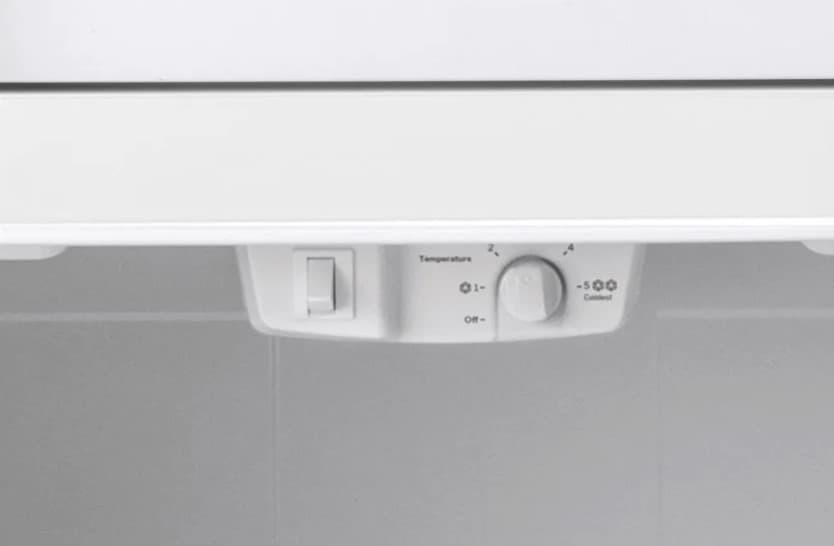8 Reasons For Ge Refrigerator Not Cooling And {How To Fix}
When your General Electric (GE) refrigerator stops cooling, it can be frustrating and even pose health risks. An ineffective fridge can lead to spoilage of perishable items, resulting in unnecessary purchases and waste. Furthermore, a malfunctioning GE refrigerator can also be hazardous if it only keeps food cold for a short time. Similarly, dealing with constant phone calls from repair workers while trying to resolve issues under warranty can be aggravating.
The cost of repairs may exceed the value of your appliance, making it financially unfeasible to fix the problem. In this scenario, understanding what causes a GE refrigerator to stop cooling is crucial. Common culprits include incorrect temperature settings, filthy condenser coils, malfunctioning condenser fans, electrical issues, improper defrost timer programming, inadequate door seals, and faulty temperature sensors. A malfunctioning thermostat dial can also be the culprit.
If your GE fridge is not cooling but still has a working light, freezer, or compressor, identifying the root cause of the issue is essential. This includes checking the refrigerator’s side after a power outage or cleaning to ensure that there are no underlying problems. To troubleshoot and potentially reset your GE refrigerator, follow these steps: adjust the temperature settings, remove the plug from the outlet, reconnect it, turn off the main switch, and then reset the appliance.
What causes a GE refrigerator to stop cooling? And how to fix
GE Appliances is renowned for producing high-quality refrigerators that can last up to 20 years, yet many users still experience cooling issues, which are one of the most common complaints. Not only do these problems affect the performance of the appliance, but they also compromise the quality and safety of stored food. As a result, it’s essential to address these issues promptly to prevent any potential harm.
Temperature settings is not set correctly

If your GE refrigerator displays a chilly temperature but the interior feels surprisingly warm, there’s likely an issue with temperature management rather than cooling. To troubleshoot this, refer to your appliance’s owner’s manual for the recommended temperature setting and adjust accordingly. If you don’t have the manual handy, the USDA suggests refrigerating food at or below 40°F (4°C) to slow bacterial growth. Verify the refrigerator’s internal temperature using a separate thermometer.
If the interior remains warmer than indicated, try reducing the temperature by a few degrees and waiting 24 hours. Gradually lower the temperature over time, allowing it to stabilize at around 4°C.
Condenser Coils that are filthy


To keep your refrigerator running efficiently, it’s essential to maintain its condenser coils. These coils are responsible for releasing heat as refrigerant flows over them, ensuring the unit maintains its optimal temperature. Typically located at the bottom of the appliance, they’re prone to dust accumulation, which can impede their ability to dissipate heat and cause the refrigerator’s temperature to rise.
Experts recommend cleaning these coils twice a year using an appliance brush, available online or in-store. As you’ll be getting dusty, it’s also a good idea to invest in a facemask for added protection. To clean your GE refrigerator condenser coils quickly and effectively:First, unplug the refrigerator from its power source. The location of the coils may vary depending on your specific model, so consult your appliance’s user manual if you’re unsure where they are.
Next, remove the grill or cover from the front of the coils to access them. A long, thin hose attachment can be used with a vacuum cleaner to loosen any stubborn dust and debris. Once the coils are free of loose dirt, use an appliance brush to thoroughly clean away any remaining dust and residue. Finally, replace the grill or cover in front of the coils and reconnect your refrigerator’s power source.
The condenser fan is malfunctioning.

When troubleshooting a GE refrigerator that’s not cooling properly, another crucial component to investigate is the condenser fan. This fan plays a vital role in keeping the refrigerant coils cool and efficient, while also regulating the internal temperature of your fridge. If the fan isn’t functioning correctly, it can lead to reduced performance or even complete failure. There are two primary causes for a malfunctioning condenser fan: clogged condenser coils and a faulty or clogged fan motor.
The most common culprit behind clogged coils is dirt, lint, and pet hair that accumulates on the back of your appliance. You have the option to clean it yourself using a screwdriver, or seek the help of a professional. To prevent future issues, make sure to use compressed air to blast away any debris before reinstalling the coil.
Electricity
One of the most glaring issues with this GE refrigerator is its complete lack of electricity – an oversight that’s surprisingly easy to miss if you don’t frequently check on it at night. A simple way to verify whether the fridge has power is to open the door and look for a light. If it flickers to life, you know it’s receiving electricity. However, if the light doesn’t turn on and you’re met with an eerie silence, there are several possible explanations.
First, check the current by plugging the unit into another outlet or using a multimeter to measure the flow. If that doesn’t reveal any issues, you may need to replace the faulty plug or adjust the fuse to get things humming again.
The defrost timer has been programmed improperly.

One of the primary reasons a GE refrigerator fails to chill is an improperly or unconfigured defrost timer. There are only two settings for this timer: off or on. If your fridge has been operating continuously for more than 24 hours and isn’t cooling, it’s likely that the defrost timer is set to ‘off’. Conversely, if it’s still running but not chilling, the timer might be stuck in an endless cycle.
A malfunctioning defrost timer can prevent the compressor from activating, causing the refrigerator to work intermittently or until the freezer compartment temperature drops to a certain point (-10°F or -18°C). To reset your GE refrigerator’s timer, follow these steps: first, turn off the power at the machine’s disconnect. Next, clear out the lower freezer door shelf of any contents. Then, press and hold the ‘Freezer’ button until it begins to blink.
This will allow you to enter a new desired time setting.
A door seal that isn’t up to snuff

A common issue with refrigerators is their failure to cool properly, which can be attributed to two primary causes: overheating and undercooling. The performance of the appliance is also impacted by the door seal’s efficiency. When the refrigerator seals are inadequate, it can lead to a range of problems, including inconsistent temperatures between the fridge and freezer compartments, as well as increased energy consumption. Additionally, this issue can cause the unit to overheat or undercool.
To troubleshoot the problem, start by ensuring that your refrigerator is properly leveled and all doors are securely shut. Furthermore, inspect the area around the appliance for any standing water or ice accumulation, as these issues could be contributing factors.
Malfunctioning Temperature Sensor
In order for the thermostat setting to be effective, the fridge’s computer must receive accurate information. The temperature sensor, also known as a thermistor, plays a crucial role in detecting and transmitting temperature data to the control board. If you’re experiencing issues with your refrigerator not reaching its optimal temperature, replacing the thermistor may be necessary.
However, it’s imperative to exercise caution when performing this task yourself – make sure to disconnect the power cord from the wall outlet before beginning installation to ensure a safe and successful process.
Dials for Thermostats
Your GE appliance’s thermostat was likely set between 35°F and 37°F when you purchased it. However, it’s surprisingly easy to accidentally adjust the dial without realizing it. The dial in question is located within the fridge compartment on newer GE models described above. In contrast, fridge-freezer units feature a dual temperature dial. The left dial controls the freezer, while the right dial regulates the refrigerator’s temperature.
This dual dial ranges from 1 (hot) to 9 (cold), with setting it to 0 disabling cooling altogether. It may take up to 24 hours for the cooling unit to activate after installation, so don’t be alarmed if you notice no immediate change on the first day.
GE fridge not cooling but light is on
If your GE refrigerator is experiencing cooling issues but other functions like interior lights are functioning as expected, the main culprit could be a malfunctioning controller board. As the brain of the appliance, this issue can cause significant problems if left unchecked.
Fortunately, this is a relatively common problem for GE refrigerators, and you may be able to identify signs of overheating such as charred markings or poor soldering joints on the motherboard.
While hiring a professional repair service might cost around $500, depending on location and labor costs, there’s an alternative.
Even if you’re not mechanically inclined, you can purchase the controller board from online retailers at a significantly lower price point than hiring a professional. GE makes it relatively easy to find the correct replacement part, allowing you to install it yourself and potentially saving time and money.
GE refrigerator not cooling but freezer is working
A GE refrigerator can be a kitchen powerhouse, but it’s not immune to occasional issues. One common problem is when the freezer is functioning as intended, yet the refrigerator fails to keep things chilled. The good news is that many of these faults can be resolved without professional intervention. To get started on troubleshooting and fixing this issue, let’s dive deeper. A faulty door gasket is often the culprit behind a poorly sealing door, which allows chilly air to escape.
This highlights the importance of ensuring a proper seal. In some cases, misalignment may be causing the issue – simply pushing the gasket back into place with your finger or a tool can resolve the problem. Your GE refrigerator’s defrost assembly works tirelessly throughout the day to remove ice that forms on the evaporator coils. When the defrost heater component fails, it prevents air from circulating and cooling your fridge.
To identify the root cause of this issue, have a qualified technician inspect the defrost thermostat, timer, and control board. The air intake damper plays a crucial role in maintaining optimal temperature throughout the unit. If the damper is faulty or blocked, cold air may not flow correctly, resulting in inadequate cooling. Inspect the damper to ensure it’s functioning properly – if it’s not, have an expert assess the issue.
In some cases, the evaporator fan may be on and the damper door open, but no air will flow out. In this scenario, the evaporator itself may become frozen.
GE refrigerator not cooling or freezing

GE refrigerators, known for their wide range of models, often experience issues with self-defrosting functions causing improper cooling. The culprit behind this problem may be the thermistor, defrost thermostat, or heater situated above the coils. Moreover, the shutdown arm on your GE refrigerator’s ice maker might require resetting if it stops responding to temperature changes or ceases generating ice.
If your appliance is not reacting to its temperature dial or failing to produce ice, a simple reset of the refrigerator may resolve the issue. Furthermore, ensuring proper airflow by vacuuming the coils beneath or behind the refrigerator can also help resolve cooling problems. In some cases, obstructed coils can negatively impact cooling performance. This can be avoided altogether if the condenser fan is not clogged, allowing it to spin freely.
To achieve this, simply detach the refrigerator and clear any blockages.
GE refrigerator not cooling after power outage
If a GE refrigerator fails to run or cool after a power outage, it’s likely due to a malfunctioning control board that’s preventing the fan from spinning. This failure can be attributed to no signal being delivered to the fan. When the control board is faulty, it may display signs such as flashing lights, unusual whining noises, a burning odor, and the light inside the refrigerator not functioning properly.
To rectify this issue, you’ll need to remove the old control panel and replace it with a functional one. This process requires some basic troubleshooting that can be completed in under an hour at home. Before attempting to replace your refrigerator’s control board, ensure you have the correct part for your appliance’s specific make and model, as each design is unique.
GE refrigerator not cooling after cleaning
Behind the freezer, you’ll find another set of crucial coils, known as the evaporator coils. These coils rely on the refrigerant to cool down and transform into a gas. The evaporator fan plays a vital role in this process by circulating cool air from the coils throughout the unit, first through the freezer and then into the refrigerator compartment. A damaged evaporator fan motor can hinder airflow, resulting in inconsistent temperatures.
For instance, you might find your freezer still operating at a chilly temperature due to its proximity to the coils, but the fresh food compartment remaining warm because the cool air isn’t being properly distributed. In such cases, replacing the evaporator fan’s motor is likely necessary to resolve the issue.
GE refrigerator not cooling on the refrigerator side
While excessive food storage in a GE refrigerator can cause unexpected temperature fluctuations, an often-overlooked culprit is the obstruction of airflow pathways. When the freezer becomes overcrowded, it may impede the flow of cold air that normally reaches the refrigerator compartment. Similarly, if the refrigerator itself is too full, it can block the air vents that allow cold air to enter its interior.
To maintain optimal performance and temperature control, it’s essential to periodically remove expired or spoiled food items from your fridge or freezer, ensuring nothing impedes the free flow of cold air. Additionally, consider rearranging shelves and containers to promote improved ventilation between stored goods, allowing for better air circulation and temperature regulation.
GE refrigerator compressor hot
Before attempting to resolve issues with overheating sides and top of your refrigerator, it’s crucial to examine the compressor. As a vital component of the appliance’s cooling system, the compressor plays a critical role in normal operation. Typically, a heated compressor can be attributed to various factors, including insufficient refrigerant levels or an improperly set thermostat that forces the compressor to work excessively.
To rectify this issue, ensure your refrigerator’s thermostat is accurately calibrated. While manually checking refrigerant levels might require expert assistance, you should prioritize ensuring the thermostat is functioning correctly. If the temperature isn’t the primary concern, consider relocating perishables and disconnecting power to the appliance when the compressor overheats, as continued operation can be hazardous.
Regardless of the root cause, it’s likely that professional expertise will be required to complete repairs once you’ve identified the problem. However, by conducting a preliminary investigation, you may be able to save time and expenses by allowing the expert to arrive prepared with necessary equipment and materials.
GE refrigerator not cooling and making clicking sound
If you’re greeted by a consistent clicking sound coming from behind your refrigerator every few seconds, it’s likely due to a faulty motherboard. To troubleshoot the issue, remove the appliance and carefully listen for the source of the noise. Typically, this involves locating a panel on the backside of the unit, which conceals the control board. If the sound appears to be emanating from this component, it has failed and requires replacement.
Unfortunately, General Electric (GE) does not provide replacement parts for the control board, so you’ll need to replace the entire component. The consequences of a malfunctioning control board are significant, as it may prevent your refrigerator from operating or chilling properly. Additionally, it regulates various functions, including the water dispenser and fan motors. Fortunately, replacing the motherboard is a relatively quick process that can be completed in around 15 minutes.
Before making a purchase, ensure you find the correct replacement part by referencing your refrigerator’s model number.
FAQs
How do I reset my GE refrigerator not cooling?
In some instances, your refrigerator may require a simple reset to restore its functionality. If the appliance stops responding to temperature adjustments or fails to produce ice as expected, a quick reboot can be just what it needs to get back on track. This straightforward process typically takes under 10 minutes to complete and offers a cost-effective solution compared to hiring a professional technician.
Step 1: Make the necessary adjustments to the refrigerator
To initiate the repair, start by relocating your refrigerator a safe distance away from the wall. By doing so, you’ll gain unhindered access to the appliance and the opportunity to thoroughly clean the area behind it, which is often neglected but crucial for maintaining a tidy kitchen.
Step 2: Remove the plug from the outlet
A familiar sight in most homes is the point where your refrigerator’s power cord connects to the wall’s AC outlet. This connection should be easily visible, as you’ve likely had to move the appliance at some point. To initiate the process of resetting your GE refrigerator, begin by unplugging the device from its power source. Allow it to remain disconnected for about a minute before proceeding.
Step 3: Connect it
Before restarting the refrigerator, allow a short interval to pass. Then, carefully plug it back into the wall outlet and wait patiently as it begins to power on. Pay attention to the sound of its motor humming back to life, signaling that it’s functioning properly once more.
Step 4: Turn off the main switch
Located within the confines of your GE refrigerator’s freezer compartment, the shutoff switch plays a crucial role in controlling the appliance’s operation. To access this small yet vital device, simply open the freezer door and you’ll find it situated within. In order to reset your freezer, flip the switch off for approximately 30 seconds before restoring its function by flipping it back on again.
Step 5: Reset
To complete the process, head to your General Electric (GE) refrigerator’s ice maker. Typically, this switch is located at the top of the ice making compartment. Next, initiate a soft reset of the refrigerator by gently pressing the latch up and down three times. This simple action will help restore normal functioning.
Conclusion
When a GE refrigerator stops cooling food to the desired temperature, it’s crucial to identify and address the issue promptly. While these appliances are renowned for their quality and performance, even they can malfunction, making diagnosis and repair essential. To avoid being overcharged by a professional, it’s vital to understand the common causes of this problem. By grasping the scope of the issue, you’ll be better equipped to tackle minor repairs yourself.
However, if you’re not comfortable with DIY fixes or don’t have experience working with mechanical parts, hiring a professional is always an option. Kitchen appliances like refrigerators can be complex and dangerous to tinker with if you lack expertise. Not only could you damage your equipment further, but you may also put yourself at risk of injury.
By recognizing the common causes of temperature issues in GE refrigerators and seeking help when needed, you’ll be able to get your appliance back up and running smoothly.
Related Posts
When issues arise with your Amana dryer not heating, it can be frustrating and disrupt daily routines. Here are six common reasons why this might be happening: First, a faulty thermostat could be the culprit – it’s essential to check if the thermostat is functioning correctly. Next, a clogged vent or lint buildup might be preventing proper airflow, causing the dryer to malfunction. Perhaps the heating element itself is damaged or worn out, which would need to be replaced.
Another possibility is that the dryer’s temperature control setting has been altered, throwing off the normal heat production. Additionally, incorrect installation of the dryer could also cause issues with its heating function. Lastly, electrical problems, such as tripped circuit breakers or faulty wiring, might prevent the dryer from heating up in the first place. By identifying and addressing these common causes, you can get your Amana dryer working efficiently again.






